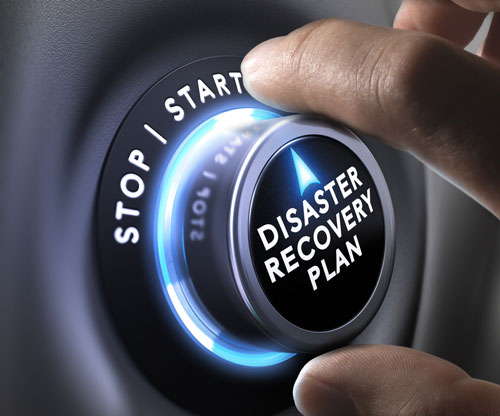We hear in the news every day about natural disasters such as fires, floods, storms and even earthquakes, and know the damage they cause. But what about the potential consequences for your business? What if your business stays closed for a period of time, and loses revenue because your information systems are unavailable? Or if a cyberattack occurs that results in a data breach that compromises your business’s reputation? Read on to learn more about how to make a disaster recovery and business continuity plan.
The Importance of Having a Plan
Disaster Recovery and Business Continuity consists of processes used to prepare for disruptive events, whether natural or man-made. Having a plan will help you know what to do and how to do it in events that can result in downtime for your business. Your plan can prevent loss of revenue, as well as loss of reputation. It can even help keep your business in business.
Assessing Your Risks
Think first of your mission-critical applications–your phone system, email system and maybe even processing orders. Consider how much downtime you can risk, having these systems out of commission. Tabulate potential overhead, loss of employee wages and revenue over the course of hours, days or weeks. Systems needing to take priority are the ones that keep your business running smoothly, keeping revenue flowing and employees productive. Other applications, including shared files, can be backed up and retrieved. Along with mitigating financial risk, a plan can guard against potential damage to your business’s reputation resulting from a data breach, or being unavailable in the event of a natural disaster.
Implement, Test and Monitor Your Plan
Once you know your risks, you can find a plan with solutions in line with your goals. One issue in implementation is making sure you have alternate systems of backup in case one system fails. Make sure to have this redundancy built into your plan. Before your plan even “goes live,” test it for restoration and recovery processes. Monitor your backup on an ongoing basis, to find and correct problems as they occur. Don’t forget the human element, and educate your employees on how to respond in a disaster scenario.
Having a plan in place can make all the difference for your business. Contact your technology advisor today to help evaluate your risks and get prepared.

